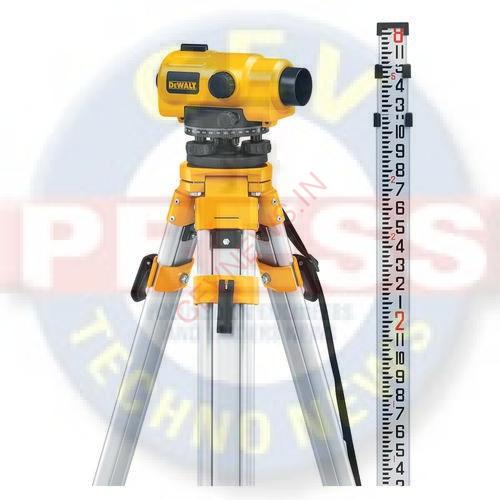An electronic distance measuring instrument is a surveying instrument for measuring distance electronically between two points through electromagnetic waves. EDM instruments are highly reliable and convenient pieces of surveying equipment and can be used to measure distances of up to 100 kilometers. Each piece of EDM equipment available at Engineer Supply provides dependably accurate distance measurements displayed on an easy-to-read digital screen. This EDM deals with the principles and procedures of separate Electronic distance measuring device (EDM) instruments that are mountable with optic/electronic theodolites. Original EDMs were individual units used only for distance measurements. EDM instruments used as modular components in modern total stations also work under the same principle of separate EDM instruments.
PRINCIPLE OF ELECTRONIC DISTANCE MEASUREMENT :
The EDM uses electromagnetic waves, the type of waves generated depends on various factors such as frequency, wavelength, and period. These are represented in the form of periodic sinusoidal waves. Frequency is defined as the number of times the waves complete one cycle. It is represented in hertz(Hz). The length traveled by the waves in one cycle is known as Wavelength. It is represented in meters.The time period is the inverse of frequency. That is the time takes to complete one cycle. It is represented by seconds.
The velocity of the electromagnetic waves depends on the medium. While the properties may vary according to the source.
f = c / λ = 1 / T
Where
c is the speed of light in a vacuum.
T is the time period
f is the frequency
λ is the wavelength
Types of Electronic Distance Measurement instruments:
- Microwave Instruments
- Infrared Wave Instruments
- Visible Light Wave Instruments
- Microwave Instruments: The surveying equipment functions with the help of microwaves come under this category. Normally these are used to measure long distances within 100km with their frequency range. The very first instrument was discovered in South Africa by Col. Harry and developed by Dr. T. L. Wadley in the 1950s and the equipment was named a Tellurometer. Tellurometer uses the above-mentioned technique, the phase comparison of wave to determine the distance. In this method two equipment and two operators needed to carry out the procedure
- Infrared Wave Instruments: Infrared instruments use gallium arsenide diode for their work. Since they have the ability to emit infrared. They are inexpensive and can be easily modulated by amplitude modulation. The wavelength is about 0.9micrometers. These can be mounted in a theodolite because they are light and compact. The range of the instrument is about 2 to 5 km.
- Visible LightWave Instruments: The lightwave instrument use visible or simply light which means wavelengths that are visible to human eyes to measure the distance. The measuring range of lightwave instruments is lesser than that of microwave instruments as because of the less transmitting power of lightwave instruments. Geodimeter falls under this type of instrument. The plus points of this type of instrument are, no signal loss, cheap instrument, one main instrument is enough, and very high accuracy of = or – 0.2mm to 1mm per km.
Advantages of Electronic Distance Measurement:
When compared to other measuring methods EDM has many advantages. Since it is an electronic device manual work power is less. Horizontal and vertical angles, Horizontal and vertical distance are automatically measured and recorded in EDM.
- High accuracy.
- Fieldwork can be done fastly
- Reduces errors.
- Less manual work
- Obstacles to chaining can be overcomes
- Less calculation is needed and more precise
- Convenient and reliable methods.

